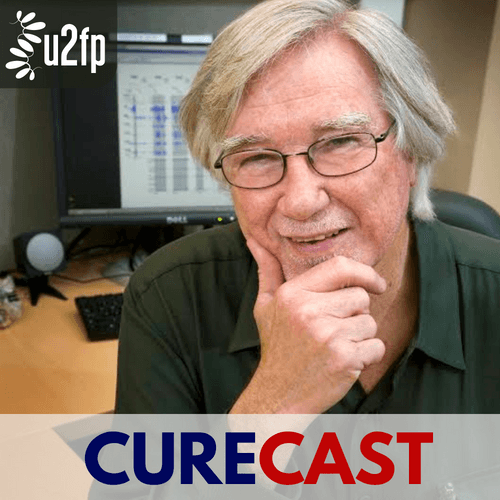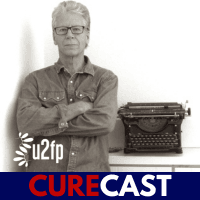Father of Stim (Episode 101)

Guest: V. Reggie Edgerton
Today we are talking to V. Reggie Edgerton, a Professor Emeritus of Nuerobiology at UCLA and co-founder of the spinal stimulation company, SpineX.
Reggie Edgerton is a giant in the field of neuromodulation. Some have called him the father of spinal stimulation, and his influence can be found in the work of most researchers in that field today. Notable names such as Susan Harkema and Gregoire Courtine were actually students in Reggie’s lab before going on to achieve their successes. Reggie has been at this work for a while. His first paper on physiology was published in 1969 and it takes some effort to scroll through the sheer number of publications to his most recent work.
During the conversation, Reggie reminds us that spinal cord injury involves an incredibly complex, multi-variable system that we still know very little about. He makes the case that our current research approach may be woefully oversimplified to be of much use. Reggie also speaks to the guiding principles of his work in desiring to find out what is possible. After so many years in the field, you will find in this conversation that Dr. Edgerton’s work is still being led by his curiosity. And you’ll hear just how holistic his approach is from the moment the conversation begins!
As always, please share your thoughts with us via email at curecast@u2fp.org. Thanks for listening!
Listen on: Spotify | Apple Podcasts | Soundcloud
Bumper music: One Love/People Get Ready by Bob Marley & The Wailers
Guest Bio
V. Reggie Edgerton, PhD
I have been studying neuromuscular plasticity for the last five decades. In the last 40 years my focus has been on the physiology of plasticity of the nervous system with an emphasis on spinal physiology and in developing neuromodulatory strategies to maximize recovery from severe neuromotor dysfunctions. Most of this effort has been focused on spinal epidural and noninvasive transcutaneous stimulation and pharmacological modulation, combined with activity dependent interventions to regain sensorimotor functions after severe paralysis. After having demonstrated the feasibility of using epidural stimulation techniques in human subjects with complete paralysis, it became evident that severely spinal injured individuals can recover significant sensory-motor and other organ system functions. One is to significantly improve the technology of electrical stimulation and identify optimal pharmacological drugs that can facilitate recovery of motor function when combined with training (motor learning). The second point of urgency that became apparent was the need for more clearly defining the mechanisms by which recovery of motor and autonomic function occurs following complete paralysis. The physiological results provide compelling evidence that spinal interneurons can be transformed to obtain remarkably normal coordinated motor tasks using spinal transcutaneous to rapidly change the physiological states of neuronal networks in the spinal cord and the brain. We are reasonably certain that we can achieve a much more adaptable and highly successful modulatory methodology that will enable us to focus the modulation on specific population of interneurons along the spinal axis to selectively activate different motor pools and thus muscles. Our most recent results demonstrate that we can effectively neuromodulate networks of the brain by stimulating spinal networks. This is a process of continuing technical development, beginning with the initial study of identifying the anatomical location interneurons that generates central pattern generation, As we reported in the laboratory of Sten Grillner in 1976. Given what we know today and the potential of capitalizing on the functional automaticity of the spinal circuitry in achieving significant recovery of locomotor function, the present proposal is a continuing effort to capitalize on these initial fundamental observations.
Our lab, in conjunction with Dr. Susan Harkema and Yury Gerasimenko were the first to demonstrate that multiple functions could be recovered with a combination of spinal neuromodulation and activity-dependent interventions in individuals that had been completely paralyzed for more than a year. This was demonstrated initially using the standard surgically implanted device that is approved for treating pain. Our first four subjects regained voluntary movement, assisted stepping and independent standing. But in parallel, improved sexual, bladder, bowel functions, improved temperature control, cardiovascular responses to sustain normal blood pressure when challenged or thostatically regaining the ability to sweat, and regained numerous sensory modalities with different degree functionalities. Similar results were obtained in using the surgical implant at cervical segments and regaining upper limb functions. We then performed similar experiments after developing noninvasive methods which provided similar outcomes as the surgical implants. During these developments we performed extensive experiments in animals demonstrating that pharmacological approaches that can be used to facilitate recovery of some of the functions lost after decades of complete paralysis. We most recently have demonstrated that similar approaches have rather remarkable responses in regaining upper limb functions after chronic paralysis due to cervical spinal injuries and in treating multiple dysfunctions in cerebral palsy.
Our major goal is to apply three interventions - transcutaneous, spinal neuromodulation, neuromodulation of the motor cortex, and motor training using a robotic device (Ekso Bionics) - to facilitate brain-spinal networks to regain synergistic overground locomotor functions in humans with a chronic spinal cord injury (SCI). At this time, however, the exciting possibilities to begin to understand and demonstrate the wisdom of studying how the brain and spinal cord works as an integrated system, using some of the new imaging and physiological methods that are currently evolving to help in understanding how we function as a totally integrated organism under in vivo conditions.
Symposium Presentation
-
This short video comes in the context of Dr. Edgerton's presentation at U2FP's 2022 Science & Advocacy Symposium: "Exposure of Unrecognized Systemic Adaptive Physiological Mechanisms has Provided a Robust Platform for Greater Recovery Post Paralysis"
Related CureCast Episodes
-
Jason and Matthew talk with U2FP Scientific Advisory Board (SAB) Director and Science Writer, Sam Maddox, in the first part of our three-part series on Spinal Stimulation.
Media Coverage
-
A UCLA scientist who treated Christopher Reeve is helping spinal cord injury patients see improvements once thought impossible.
-
Dr. Reggie Edgerton: Science in Motion and How the Brain and Spinal Cord Control Movement
-
"There are tiny rat treadmills in the lab. And jars of Nutella, also for the rats. There are..."























